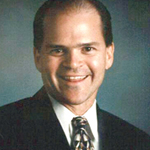Rx for Nearsightedness: Go Outside and Play
When you were a child, how many times did your mother say, “Go outside and play!”
It turns out mom knew what she was talking about. Playing outside is good not just for your health but for your vision health as well.
Studies show that children are developing eye strain and near-sightedness at higher numbers and at earlier ages than in previous generations.
The reasons are obvious to anyone with kids – children now spend more time in front of screens (television, computer, smart phone and iPods.)
These devices offer children two-dimensional images – just inches to a few feet from their eyes.
Our visual systems were not designed for screens only, according to Dr. Rick Graebe, a behavioral optometrist in Versailles.
“Our visual systems were developed so we could be buffalo hunters,” he said. “We were standing erect, looking at the horizon, scanning constantly and using natural light. When you read or text or use a computer, you are sitting with shoulders hunched and head down.”
Children also asked to learn to read at an earlier age now. Instead of interacting with three-dimensional objects like building blocks, preschoolers are learning their letters while looking at books, tablets and iPhones.
“There is no question,” Graebe said, “that kids who spend more time outdoors are less likely to develop near-sightedness.”
Children with nearsightedness also are at greater risk as adults for glaucoma, retinal detachment and macular degeneration.
If your children have already been diagnosed with nearsightedness, treatment can reduce the amount of time children spend wearing glasses.
Dr. Graebe, a proponent of Vision Therapy, a kind of physical therapy for the eyes, brain and body, recommends a series of eye exercises that will help alleviate dependence on lenses.
To reduce eye strain from close-up work for kids and adults, Dr. Graebe offers a simple remedy. He calls it the 20-20-20 rule.
Said Graebe: “When you are reading or doing close-up work, you should stop every 20 minutes and look 20 feet away for 20 seconds.”

